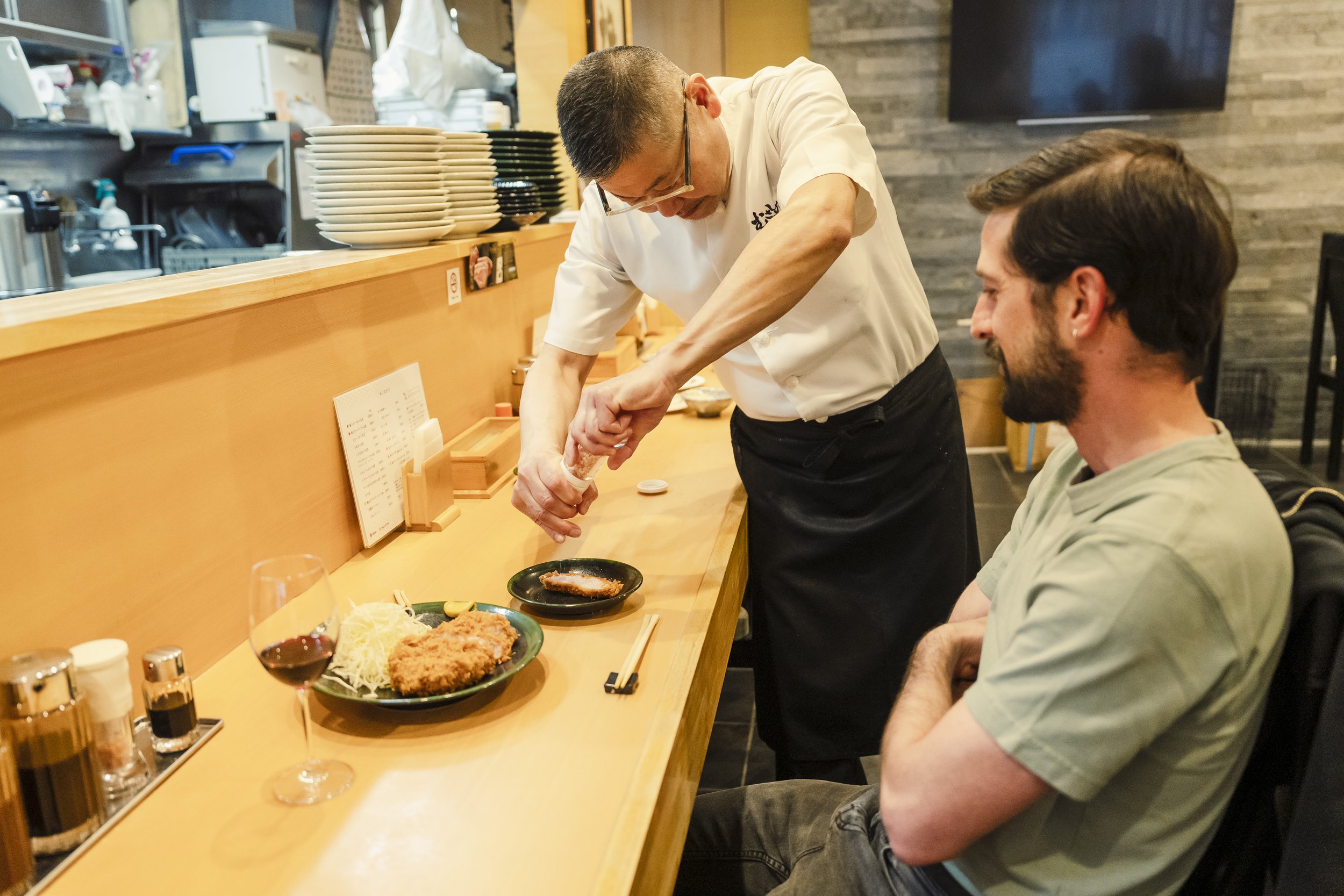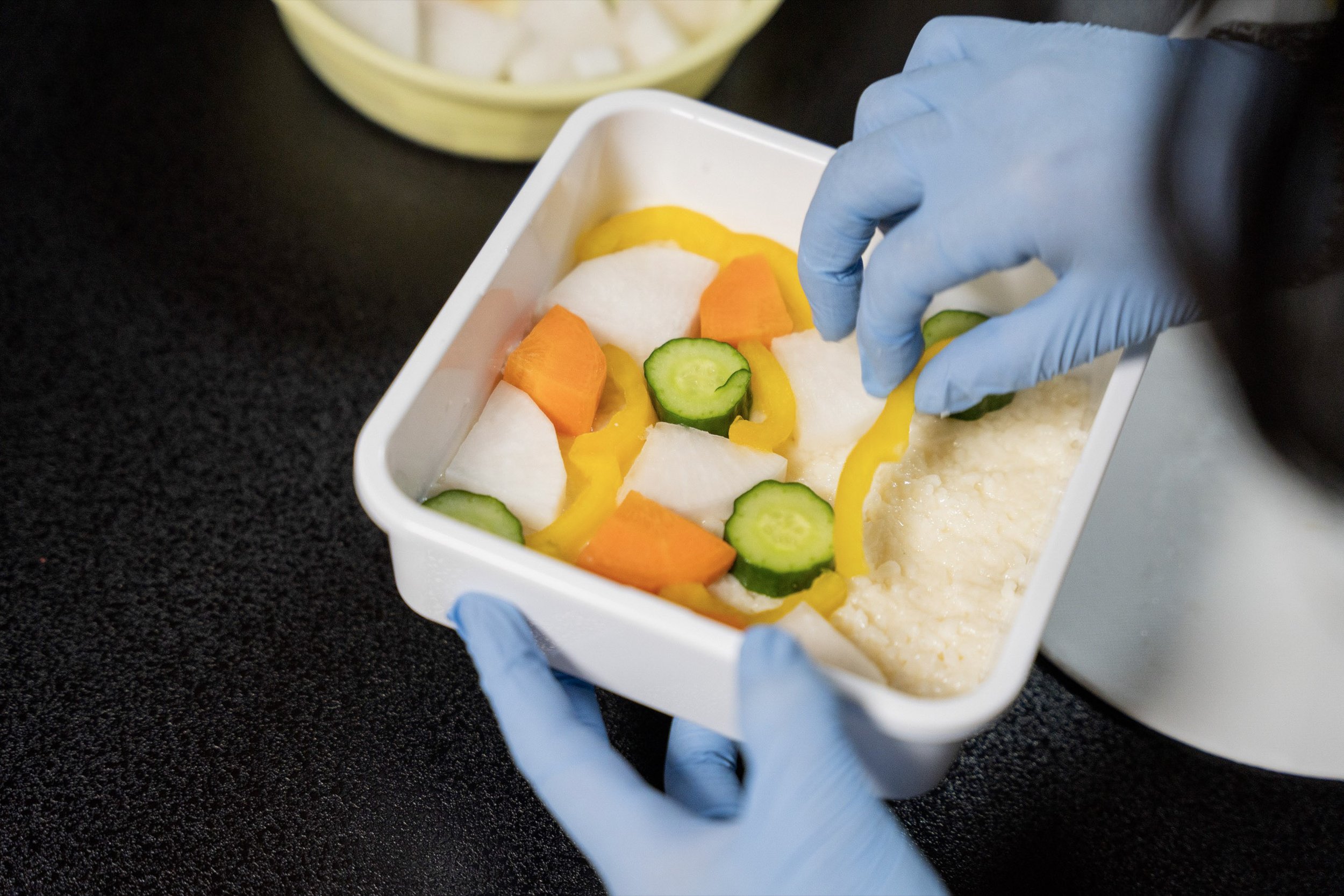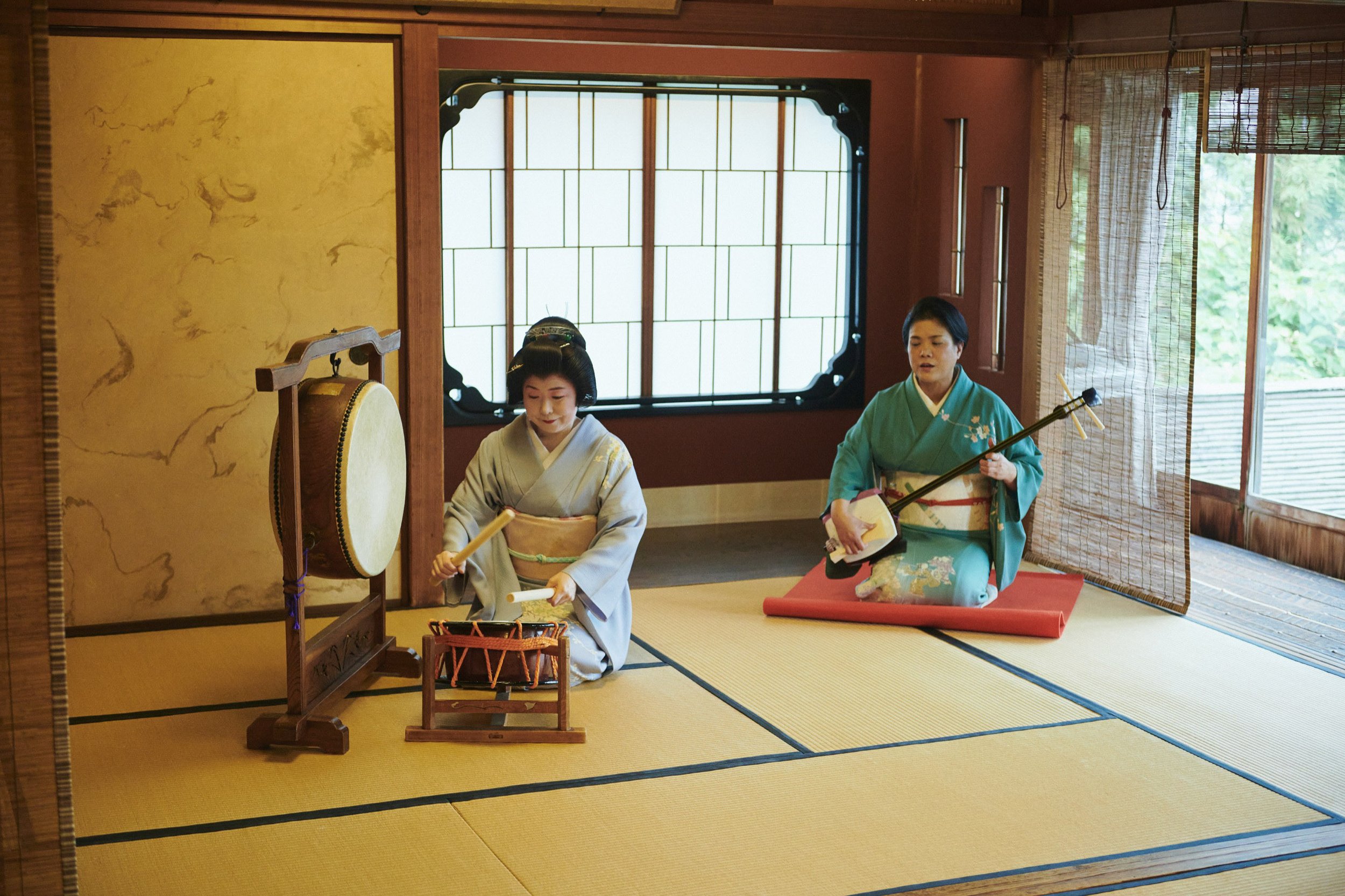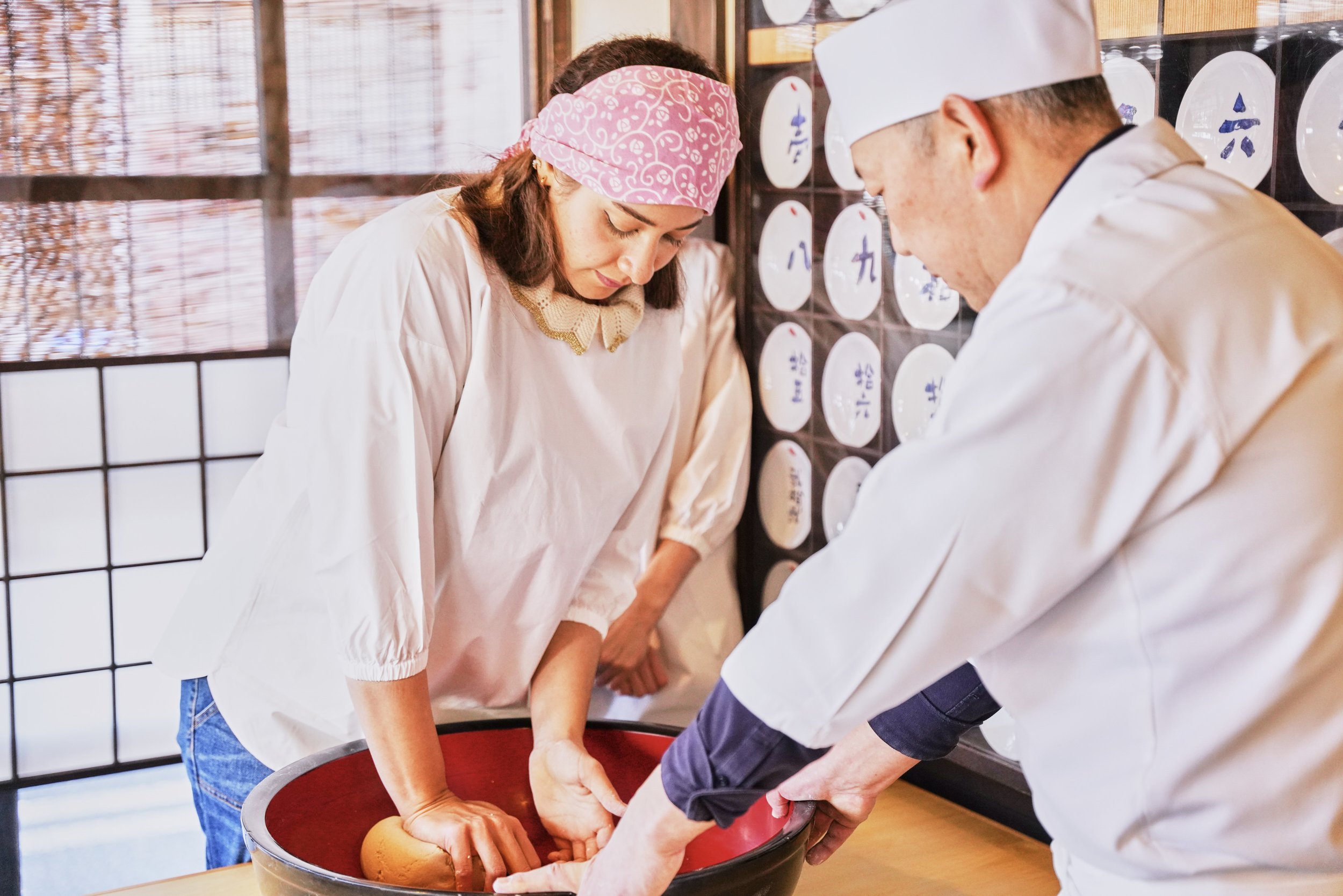Subtraction: The Art of Japanese Cooking
By David McElhinney
When chef-turned-writer Michael Booth dined at Mibu, a Tokyo restaurant so secretive it seems almost apocryphal, the food caused involuntary bursts of pleasure, every hair on his body stood on end. It was a “seismic moment” in his life as an eater:
“You didn’t go for the décor, to be seen, or because it was prestigious or a celebrity hangout,” Booth wrote in his book, Sushi and Beyond. “You went for the narrative, for what the food told you about nature, flavor and texture, perhaps even about yourself. It was dining as a spiritual experience, as an evocation of history.”
You’d be forgiven for thinking the show-stopping dish was one of startling culinary complexity – a molecular beef foam or Heston Blumenthal recipe requiring 100-plus steps. But rather, it was a simple pike conger eel in a bowl of dashi. The eel had not been marinated, nor was it seasoned, doused in sauce, or charred over a crackling hibachi grill. Technically, no external flavors had been added at all. Instead, the chef had extracted the hidden fumi, or taste-aromas, within.
This all might sound rather effete – esoteric even – but it is the foundational cornerstone on which Japanese cuisine has long been built. It’s the art of “subtractive cooking.”
A Simple Art
Western cooking is often described as “additive.” With its foundation in French culinary techniques, it celebrates sauces and seasonings which imbue a dish’s composite parts with harmonizing flavor profiles. Japanese cooking, however, focuses on dashi, thin broths, and diluted sake to remove – or subtract – the bitterness and disagreeable odors from food. The aim is to bring out and enhance the inherent flavors of the produce. Subtraction is a minimalist and economical approach to cooking, one reflected in many other Japanese art forms: the sparseness of haiku poetry, the understated simplicity of ikebana flower arrangements, the interplay of light, space and shadow in traditional Japanese architecture.
Though Japan has soul food bursting with flavor and diverse elements – think savory okonomiyaki pancakes and Hokkaido-style miso butter ramen – at its most refined, traditional Japanese cuisine is beautifully uncomplicated. Shizuo Tsuji, the former head of the prestigious Tsuji Culinary Institute in Osaka, emphasized this point in Japanese Cooking: A Simple Art, arguing that it is upheld by two ingredients: “a rather delicate stock (dashi) made from konbu (giant kelp) and flakes of dried bonito, and shoyu, Japanese soy sauce.”
You may not detect these in every dish you eat in Japan, but they likely will have played a pivotal role in the cooking process. The question then becomes the following: how do two seemingly elementary ingredients hold such influence over a food culture that has been recognized by UNESCO as Intangible Cultural Heritage?
First of all, produce is of paramount importance. Japan has four distinct seasons – which were traditionally broken down into 72 micro-seasons – each of which dictates what kind of produce thrives. In fact, the local greengrocer is often the first place one notices the passage of time: the abundance of radishes and leafy greens in winter, an assortment of strawberries heralding the spring, melons and goya (bitter gourds) in summer, or persimmons and chestnuts displaying the colors of autumn.
Chefs also decide when to utilize certain vegetables based on what stage they are at in the ripening cycle. Hashari, or young vegetables, offer crunchy textures and delicate flavors. Sakari, or mature vegetables, are at peak ripeness – soft and full of flavor. Nagori, or “remnant” vegetables, are overripe, with strong flavors and tender textures.
This offers a wide variety of potential fumi taste-aromas to unveil using dashi and shoyu. Both of these are rich in umami – one of the five basic tastes alongside sweet, salty, sour, and bitter – which was first identified by Professor Kikunae Ikeda of Tokyo Imperial University in 1908. Umami refers to a savory flavor distinguishable from the other major taste categories and is most closely associated with meat and shellfish, although it is also detectable in tomatoes, mushrooms, and some cheeses.
When dashi is used as the base for a broth or served as a condiment, the umami gives depth of flavor to the vegetables, meat, or seafood it is paired with, and it removes the less desirable taste properties of each ingredient. Shoyu may be combined with a dashi broth in the cooking process or simply used as a food accompaniment. Again, it is the umami in Japanese soy sauce, rather than the salty zing, that brings out the best in a cube of tofu, a slice of sashimi, or tsukemono (pickled vegetables) without overwhelming them.
Because fumi is so important, the use of herbs and spices, which can mask a food’s innate flavor, is limited in Japan. Aromatics used to add flavor in other national cuisines – ginger, garlic, onions, pepper, or shiso – are more likely to appear as condiments, enhancing the fumi rather than detracting from it.
The idea is to create a harmony between taste and aroma so that one cannot easily be divided from the other. There is a primeval beauty to this too; anthropoids, or apes, have the singular distinction in the animal kingdom of being able to taste and smell simultaneously. When applied correctly, subtractive cooking can therefore appeal to an underlying trait which defines us as human. This is perhaps, in some subconscious way, why Japanese food is so revered the world over, why foodie travelers flock to the archipelago with little on their agendas other than enjoying the culinary fare, and why Tokyo, Kyoto, and Osaka consistently rank in the top five cities in the world for Michelin-starred restaurants.
But while much is made of the simplicity of Japanese cuisine, this should not be conflated with a lack of expertise. Hiroshi Ishida, the Mibu chef who sent Michael Booth into ecstasy, was operating at a level near perfection. The dashi, usually cooked in-house each morning, was made at the very moment the guests were served it, shaving the katsuobushi (dried bonito flakes) at the last minute to ensure the smell did not evaporate too quickly. Ishida had never made the dish before – he devised it that afternoon – and will likely never make it again. A simple art, perhaps, but only if one possesses the necessary tools to make it appear so.
Foods that Celebrate Subtractive Cooking
When one first arrives in Japan, it is easy to think of Japanese cuisine as largely defined by sushi and ramen. However, the pantheon of national dishes is as vast and as varied as any cuisine in the world. Such variety is influenced by regional preferences, culinary techniques, cultural exchange, and shun, the freshness of ingredients. And the dishes that celebrate subtractive cooking are equally as extensive:
Sashimi: Sashimi, sliced raw fish, is one of the least complicated Japanese foods. The natural flavors, and in particular the textures, are allowed to shine with the aid of little more than a soy sauce accompaniment. Condiments, like shaved daikon radish and shiso, are sometimes included.
Tempura: Tempura, first introduced by Portuguese missionaries in the 16th century, may be fried, but it still falls under the subtractive cooking method. High-quality seafood or vegetables are lightly battered and deep-fried in sesame oil to maintain their original flavors and textures. They are then served with grated daikon radish and tentsuyu, a dipping sauce of dashi, shoyu, and mirin (cooking sake).
Zaru Soba and Zaru Udon: These dishes feature chilled soba (buckwheat) or udon (wheat) noodles served on a zaru (bamboo tray) with a tsuyu dipping sauce. The tsuyu is made of sake, mirin, shoyu, kombu, and katsuobushi, which diners typically garnish with green onions, wasabi, and grated daikon.
Sukiyaki: Sukiyaki is all about the broth – typically made from soy sauce, mirin, and a dash of sugar – and is designed to enhance the ingredients without overpowering them. The cooking process involves simmering high-quality, thin-sliced beef, tofu, and vegetables in the broth.
Miso Soup: Miso soup is a simple dish made by dissolving miso paste in dashi stock and adding ingredients like tofu, seaweed, and green onions. The goal is to balance the umami-rich miso with the lightness of the dashi and the subtle flavors of the added ingredients. Miso soup is often served in a bowl with a lid to ensure diners get the strongest aroma when the lid is removed.
Kaiseki Ryori: This multicourse, seasonal cuisine is one of Japan’s most refined forms of dining. Often described as a “culinary symphony,” each dish is subtle yet in harmony with the next. The use of soy sauce and dashi balances the natural flavors of the produce, allowing it to take center stage.
Shojin Ryori: Shojin ryori is the food of the Buddhist monks, eaten to support self-reflection (shojin means “to focus while going forward”). One of the only cuisines in Japan entirely suitable for vegetarians, its focus is on simple ingredients and natural flavors, with soy sauce used in moderation. Shojin ryori also forbids the use of gokun, five strong-smelling vegetables that Buddhists believe overstimulate the body: garlic, onions, green onions, Chinese chives, and shallots.
The connective thread between these dishes–bar the use of similar base ingredients – is that they can appear as high art without any underlying pretension. As a result, Japanese cuisine holds a unique place in the global culinary landscape. It does not require the fine-dining “wow factor” of liquid nitrogen, too-clever-by-half dish deconstructions, or complex compotes and purees cast across the plate. In relying on the simplicity of fundamentals, of dashi and shoyu, – of fumi –, Japanese subtractive cooking is more reserved, delivering a sensual dining experience peeled back to base level. It can take us on a journey exploring our innate and intimate connection to food, where the produce is always the hero of the story.
About the Author: David is a Northern Irish freelance journalist, writer and occasional editor based in Tokyo and the UK. Fusing reporting and social commentary with extensive experience traveling throughout the country, he has published stories on travel, arts and culture, politics and current affairs, and sports in Japan. His work has appeared in a range of national and international publications online and in print. You can find links to his work at www.davidmcelhinney.com.










